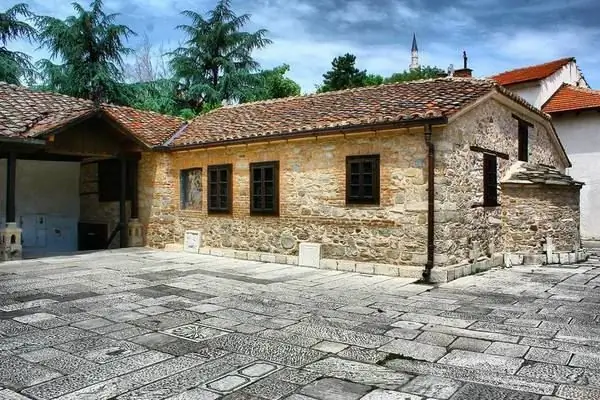
Description of the attraction
The Orthodox Church of the Holy Savior is located to the east of the Skopsky Kale fortress - one of the main attractions of Skopje. The temple looks very simple, from the outside it resembles an ordinary elongated peasant house. It was built at the end of the 17th or the beginning of the 18th century after a fire in 1689, as a result of which most of the buildings in the city were damaged. Muslims demanded that the local Orthodox community build low churches that would not rise above mosques, thereby attracting the attention of travelers. The Church of the Holy Savior turned out to be squat, as if sunk into the ground.
Its main treasure, which even the British Museum has laid eyes on, is the magnificent iconostasis, created in the years 1819-1824. Some of the icons of the throne were painted in 1867. The iconostasis was decorated with carvings by the master Petre Filipovsky "Garka" and the brothers Marko and Makariy Frkovsky from the village of Galinchik. On the right edge of the iconostasis, the authors depicted themselves. Here you can see Petre Filipovsky with a plan in his hands and two other craftsmen holding hammers and chisels. Petre Filipovsky has been engaged in woodcarving all his life. He designed the iconostasis in the church in Lesnovo, the Crucifixion in the church of St. George in Prizren, the iconostasis and the canopy in the church of the Bigovsky monastery. In the last years of his life, he made an iconostasis for the Church of St. Nicholas in Krusevo.
The iconostasis in the Church of the Holy Savior in Skopje is 10 meters long and 6 meters wide. It is interesting that some of the biblical characters were given Balkan features by the artists.
In the courtyard of the Church of the Holy Savior there is a marble tomb of the Macedonian revolutionary Gotse Delchev. It is installed on three small stone pillars.






